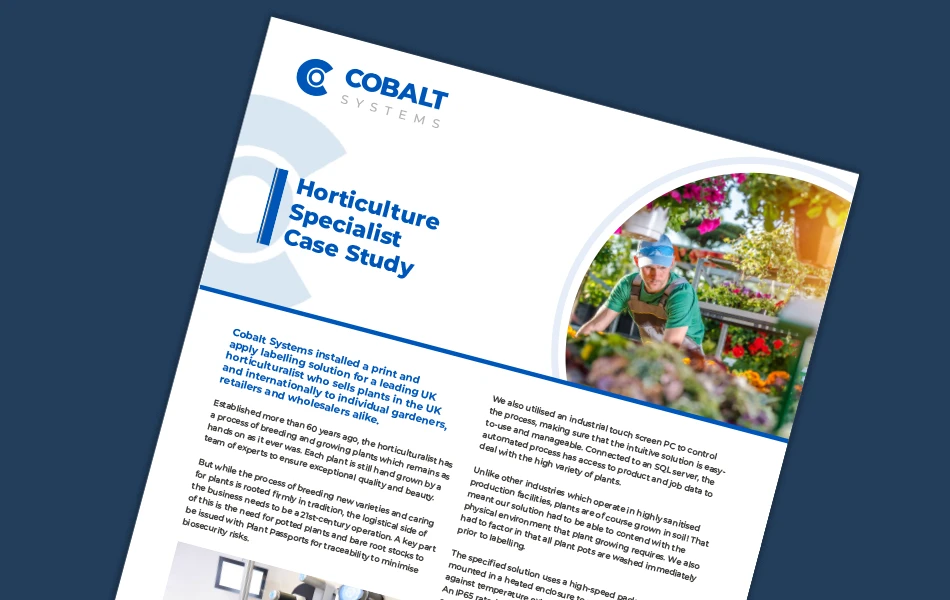Cobalt Systems installed a print and apply labelling solution for a leading UK horticulturist who sells plants in the UK and internationally to individual gardeners, retailers and wholesalers alike.
Established more than 60 years ago, the horticulturist has a process of breeding and growing plants which remains as hands-on as it ever was. Each plant is still hand grown by a team of experts to ensure exceptional quality and beauty.
But while the process of breeding new varieties and caring for plants is rooted firmly in tradition, the logistical side of the business needs to be a 21st Century operation.
A key part of this is the need for potted plants and bare root stocks to be issued with Plant Passports for traceability to minimise biosecurity risks.
With a product range of more than 200 plant varieties, the company needed a labelling operation that was capable of dealing with significant volumes of data but allowed for a high level of automation.
To manage the requirement of high-speed, varied labelling, we specified a Nexus 20 Linear machine with a 400mm reach and an integrated conveyor coupled to a bespoke arrangement for data capture, validation and protection against the surroundings.
We also utilised an industrial touchscreen PC to control the process, making sure that the intuitive solution is easy-to-use and manageable. Connected to an SQL server, the automated process has access to product and job data to deal with the high variety of plants.
Unlike other industries which operate in highly sanitised production facilities, plants are grown in soil. This meant our solution had to be able to contend with the physical environment that plant growing requires. We also had to factor in that all plant pots are washed immediately prior to labelling.
The specified solution uses a high-speed pack applicator, mounted in a heated enclosure to protect the machine against temperature extremes and risk of dirt contamination. An IP65-rated slat conveyor allows the wet plant pots to continue to drain as they move along the production line. Along with a slat conveyor, the labelling solution includes an air blade drier to ensure that the surface is sanitised and also primed for labelling.
Prior to reaching the applicator itself, the first stage of the data capture process scans and reads the product label and communicates with a Nexus 20 print and apply system, allowing the correct label to be printed and applied in real time.
Due to the washing process, pots are still wet as the label is applied, so a foam pad is used to apply extra pressure and ensure label adhesion, along with the air blade drier making the surface as dry as possible prior to labelling.
Once the label has been applied, the product moves along the conveyor and is scanned a second time to verify the correct label has been applied and relays that back to the company’s ERP system for record-keeping and reporting purposes.



